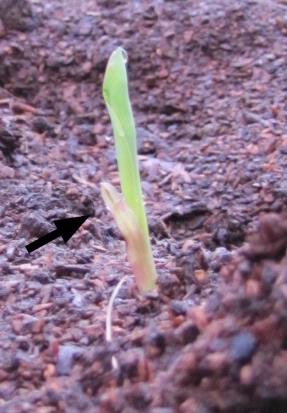I wish I had some armor for my corn.
Some years ago I grew corn but didn’t wind up eating a single ear. All of the ears were consumed either by evil ear boring caterpillars or raccoons. Sweet corn is delicious and the varmints know it.
Corn is also a big feeder; it takes a lot of nitrogen to grow a plant that tall. You also only get two ears per plant, so the yield is kind of low.
But they are so delicious and I don’t pass a farm stand on my way home anymore, so:
I took this picture last night and they’re already clearly bigger.
I plan to use Bt against the caterpillars and hopefully the raccoons won’t notice. Bt is Bacillus Thuringensis. It’s a bacterium that secretes a protein toxic to caterpillars. In the lepidopteran gut it crystalizes and the bugs die in agonizing pain. At least I hope they do.
It’s an organic pesticide acccording to most organic farmers because it isn’t synthetic. To the bugs it’s just as deadly.
I wish that corn protected itself later in life as well as it does in the beginning. Corn is a monocot — that is a single leaf is the first thing that emerges from the seed (like onions, bannanas, asparagus, grass, rice, and sorghum). A lot of grain producing monocots have a bit of armor when they first come out of the ground. It’s a sheath that protects that first leaf and it’s called a coleoptile. Now that’s a cool sounding bit of anatomy. Kind of sounds like a dinosaur. It doesn’t look like a dinosaur.

Like many smart scientists, Darwin did a lot of his experiments on plants. In one he and his son (which one do you think did the experiment? Darwin =Professor son = grad student. He probably didn’t get paid much either and had to kowtow to his domineering father. At least he didn’t also have to teach his father’s classes and lie to his wife….but I digress). Where was I? Right, Darwin’s son shined a light on one side of the cotyledon. The plant bent toward the light. That’s not surprising. However, he noticed that the cells that did the bending were far from the one that received the light. This meant a signal had to travel through the plant. They (and by this I mean he, though the old bastard no doubt claimed credit) had observed evidence of the first plant hormone: auxin.
Now if only my corn plants grew armor for their entire life span I wouldn’t have to worry about the raccoons.


